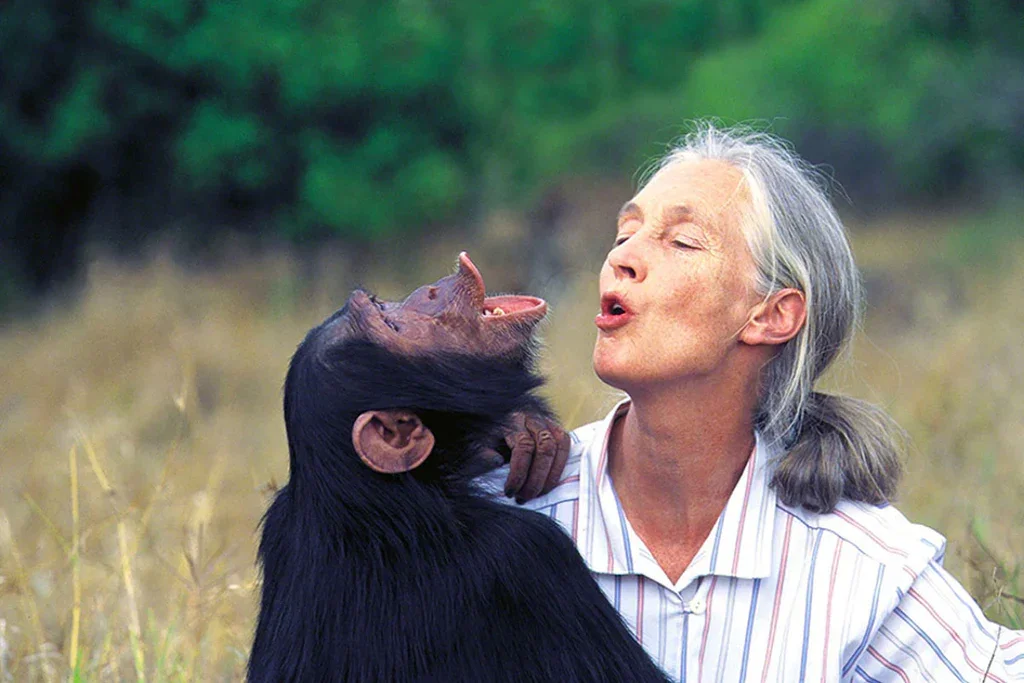Jane Goodall and Migration: Lessons from the Wild for a World in Motion
When Jane Goodall arrived in what is now Gombe Stream National Park in Tanzania in 1960, she carried little more than binoculars, a notebook, and an unshakable curiosity about the natural world. What she witnessed over the decades transformed our understanding of chimpanzees and our sense of what migration — in every sense of the word — means for survival, adaptation, and belonging.
Goodall’s chimpanzees were never static. They shifted territories when fruiting trees disappeared, forged new paths through forests, and sometimes clashed violently with neighboring groups when resources were scarce. These movements were not wanderlust. They were necessity. Chimpanzees, like humans, migrate to live. That fundamental truth — that movement is part of survival — links Goodall’s forest observations to today’s global conversations on human migration.
For Goodall, migration is not just about animals on the move; it is about ecosystems in motion. She often warns that deforestation and human expansion into wild spaces shrink animal habitats, pushing chimpanzees into smaller, more fragile ranges. But there is a mirror here: just as human activity displaces animals, humans are displaced by war, climate change, famine, and political instability. The shrinking forests of Tanzania and the refugee camps of the Middle East or the migration corridors at the U.S.-Mexico border are different contexts, yet they reveal the same truth: movement is not an exception to life, it is the rule.
There is also another kind of migration Goodall emphasizes — the migration of knowledge, values, and culture. Ideas, like people, travel across borders. When chimpanzees innovate — using tools to fish termites or crack nuts with stones — these behaviors spread socially through their communities. In humans, this phenomenon is magnified. Migration carries not only bodies but also skills, traditions, and creativity that enrich the societies they touch. Goodall has long argued that human ingenuity, coupled with empathy, is our greatest hope in solving global challenges. Migration, then, is not simply the transfer of labor; it is the transfer of possibility.
And Goodall herself lived this truth. She left the safety of England at just 26 years old to immerse herself in East Africa — an extraordinary act of migration for a woman in the 1960s. Her journey was geographic, yes, but it was also social and cultural. She crossed into a male-dominated scientific world that doubted her presence. Yet by daring to move, she changed the field of primatology forever. Her migration story shows us that crossing borders, whether physical or professional, is often an act of courage as much as necessity.
Today, Goodall continues to connect these themes through the work of the Jane Goodall Institute and its Roots & Shoots program, which engages young people worldwide to care for the environment, people, and animals together. The vision is clear: migration — whether of wildlife, people, or ideas — is interconnected. The well-being of one depends on the well-being of all.
For those of us working in law, policy, and advisory roles, the lesson is profound. Migration should not be seen as a disruption but as a natural response to challenge and change. Borders may regulate entry, but they cannot erase the human impulse to move in search of safety, dignity, and a future. Goodall’s forest stories remind us that the instinct to migrate is not a weakness. It is resilience written into our DNA.
At Onor Advisory, we honor this truth. Migration is not an accident to be managed away. It is a reality to be understood, guided, and dignified. Like the chimpanzees Goodall studied, people adapt, endure, and innovate when they move. Our responsibility — as lawyers, advisors, and fellow humans — is to ensure those journeys are supported by clarity, strategy, and respect.
Migration is survival. Migration is courage. Migration is life in motion.

